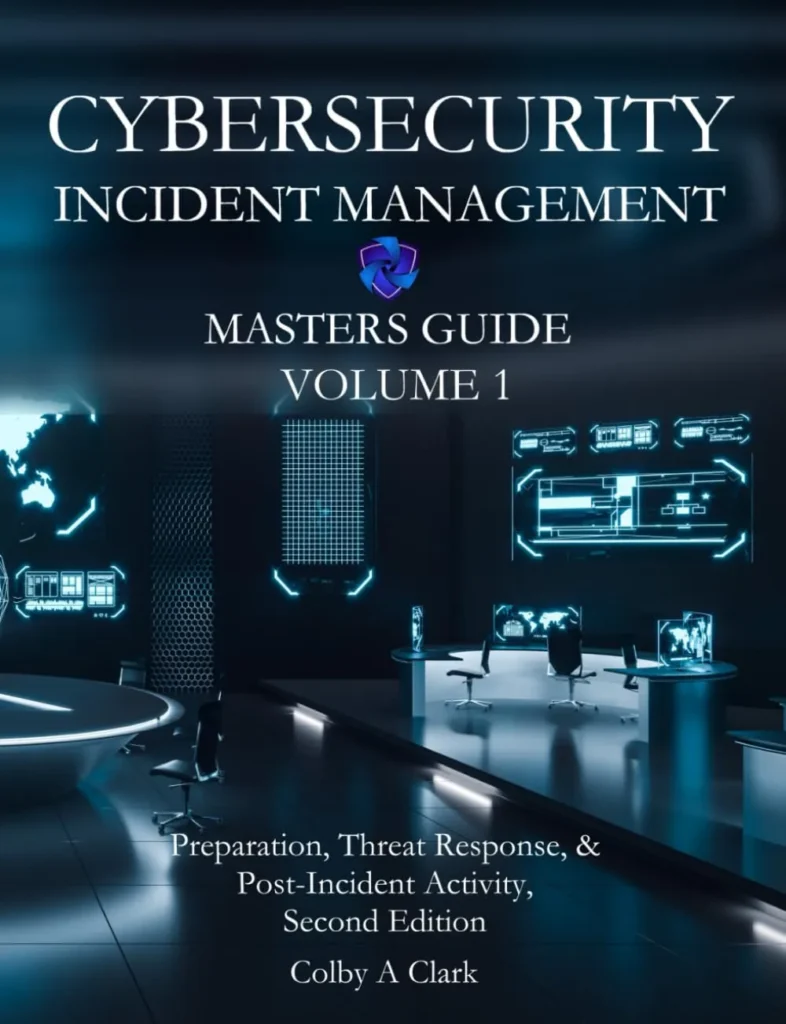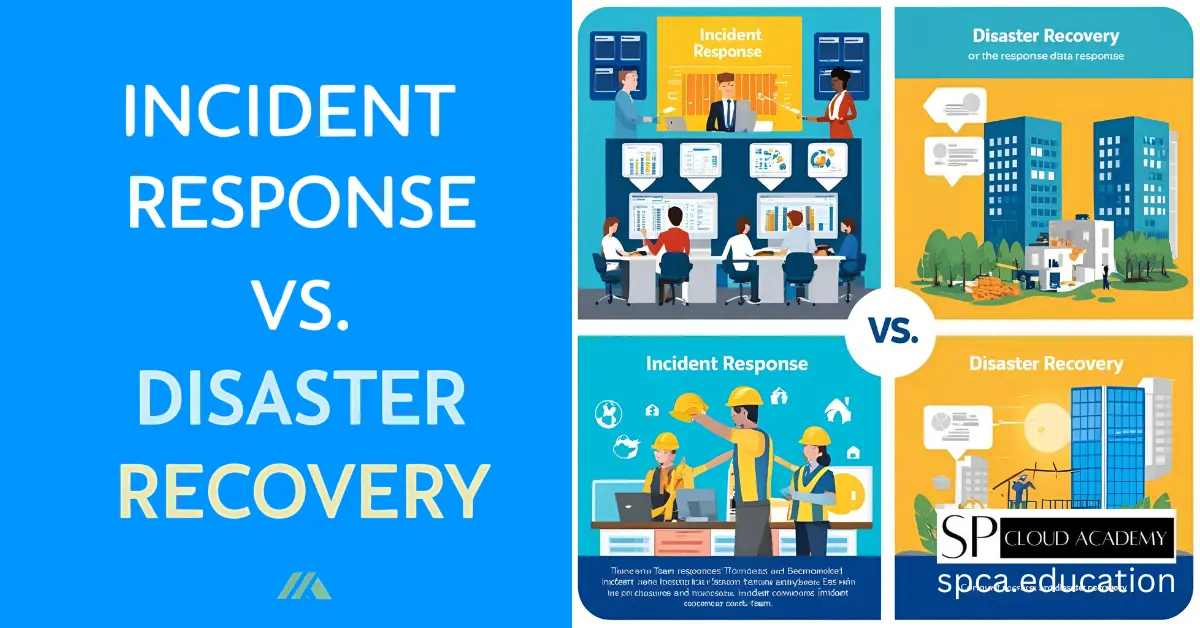1. Introduction
Cybersecurity threats are evolving at an unprecedented rate, affecting businesses of all sizes. Organizations need to be prepared for both minor security incidents and major disruptions that could cripple operations. Two critical strategies play a role in mitigating cyber risks: Incident Response (IR) and Disaster Recovery (DR).
While both aim to minimize damage and ensure continuity, their approaches, scopes, and execution methods differ. Understanding these differences is crucial for companies striving to maintain security resilience. This article provides an in-depth comparison between IR and DR, helping businesses craft robust cybersecurity strategies.
2. Understanding Incident Response (IR)
Definition and Core Objectives
Incident Response (IR) is the structured approach organizations take to detect, contain, and mitigate cybersecurity threats. The main goal is to handle security incidents effectively, preventing further damage while restoring normal operations quickly.
Key Components of an Incident Response Plan (IRP)
A well-structured IRP includes:
- Preparation: Developing security policies and conducting employee training.
- Detection & Analysis: Identifying potential threats through monitoring tools.
- Containment & Eradication: Isolating affected systems and removing threats.
- Recovery: Restoring normal operations with reinforced security.
- Lessons Learned: Conducting post-incident reviews to enhance future responses.
Common Cybersecurity Incidents Requiring IR
Some cybersecurity incidents that necessitate a rapid response include:
- Ransomware attacks
- Phishing attempts
- Data breaches
- Insider threats
- Distributed Denial of Service (DDoS) attacks
The Role of an Incident Response Team (IRT)
An IRT comprises cybersecurity professionals responsible for implementing the IRP. Key roles include:
- Incident Manager: Oversees the response process.
- Security Analysts: Investigate and mitigate threats.
- Legal & Compliance Experts: Ensure regulatory adherence.
- Communication Officers: Handle public relations and internal messaging.
3. Understanding Disaster Recovery (DR)
Definition and Significance
Disaster Recovery (DR) refers to an organization’s strategy for restoring IT infrastructure, applications, and data after a catastrophic event. The objective is to minimize downtime and data loss while ensuring business continuity.
Key Components of a Disaster Recovery Plan (DRP)
A successful DRP involves:
- Risk Assessment & Business Impact Analysis (BIA)
- Data Backup & Redundancy Strategies
- Failover and Recovery Mechanisms
- Testing & Continuous Improvement
Scenarios That Trigger DR Plans
Unlike IR, DR is activated in response to large-scale disruptions, such as:
- Natural disasters (earthquakes, floods, hurricanes)
- Cyberattacks that cause data corruption
- Extended power outages
- Hardware failures
The Role of a Disaster Recovery Team
A DR Team ensures seamless restoration of systems and includes:
- IT Infrastructure Specialists: Handle network and server recovery.
- Data Protection Officers: Secure critical business data.
- Business Continuity Managers: Oversee operational resilience efforts.
4. Key Differences Between Incident Response and Disaster Recovery
| Feature | Incident Response (IR) | Disaster Recovery (DR) |
|---|---|---|
| Scope | Focuses on mitigating security threats | Focuses on restoring IT infrastructure |
| Trigger Events | Cyberattacks, security breaches | Natural disasters, large-scale IT failures |
| Timeframe | Immediate, short-term | Longer-term restoration process |
| Objective | Containment & threat elimination | Business continuity & IT system recovery |
| Team Involved | Security analysts, IR specialists | IT recovery, business continuity teams |
5. When to Implement Incident Response vs. Disaster Recovery
Case Study: Incident Response in Action
Imagine a financial institution facing a ransomware attack. IR steps include:
- Identifying the ransomware variant.
- Isolating affected systems to prevent lateral movement.
- Notifying relevant stakeholders.
- Deploying decryption tools and patches.
- Reviewing logs to prevent recurrence.
Case Study: Disaster Recovery in Action
Consider an e-commerce company affected by a data center failure due to flooding. DR steps include:
- Switching operations to a secondary data center.
- Restoring backup files from cloud storage.
- Conducting system-wide integrity checks.
- Updating disaster recovery documentation.
6. Steps in an Effective Incident Response Plan
- Preparation: Conduct regular security training.
- Detection & Analysis: Utilize SIEM tools for real-time threat monitoring.
- Containment & Eradication: Quarantine affected systems.
- Recovery: Reinstate clean backups.
- Post-Incident Review: Assess gaps in security protocols.

“An essential guide for cybersecurity professionals, detailing incident management frameworks, response strategies, and post-incident processes. Offers practical tools, real-world examples, and clear explanations. While some sections are dense for novices, the structured approach benefits both new and experienced practitioners. Invaluable for enhancing organizational resilience. A must-read for IT managers and security teams aiming to master incident response. Highly recommended!”
7. Steps in an Effective Disaster Recovery Plan
- Risk Assessment: Identify critical IT assets.
- Data Backup Strategies: Maintain offsite and cloud backups.
- Failover Procedures: Establish secondary operational sites.
- Recovery Testing: Conduct periodic drills to evaluate effectiveness.
8. Best Practices for IR and DR Integration
- Automate security responses using AI-driven tools.
- Align IR & DR with regulatory compliance.
- Conduct cross-team training to improve coordination.
9. Choosing the Right Cybersecurity Strategy for Your Organization
Businesses must assess risk exposure, compliance requirements, and operational needs to balance IR and DR efforts effectively.
10. Future Trends in Incident Response and Disaster Recovery
- Rise of AI & Machine Learning for predictive analytics.
- Cloud-based DR Solutions reducing recovery time.
- Zero Trust Security Models minimizing cyber risks.
11. Conclusion
Both Incident Response (IR) and Disaster Recovery (DR) are vital to an organization’s cybersecurity framework. IR focuses on detecting and containing threats, while DR ensures long-term business continuity after major disruptions. Businesses must adopt a proactive approach by integrating both strategies to mitigate risks effectively.
Final Thought
Implementing a comprehensive cybersecurity strategy combining IR and DR is the key to organizational resilience and long-term security success.
See Also
-

Unmasking Fake Photos: How Metadata Analysis and Reverse Search Reveal the Truth
-

The Secret Weapons of Smart Self-Defense in the Age of Cyberbullying
-

Secure Smarter: The Best Android Password Apps to Trust in 2025
-

Unlocking Safety: The Ultimate Mobile Device Security Policy Your Team Needs Now
-

Is Your Cloud Data Safe? The Must-Have Storage Policy Every Business Needs
-

Browse Like a Ghost: The Ultimate Guide to Private Surfing on All Your Devices with a VPN
-

Mastering Penetration Testing: A Complete Guide for Beginners and Professionals
-

IT Security Auditing: The Ultimate Guide to Protecting Your Business from Cyber Threats
-

Zero Trust Explained: Breaking Down the Basics of Modern Cybersecurity
